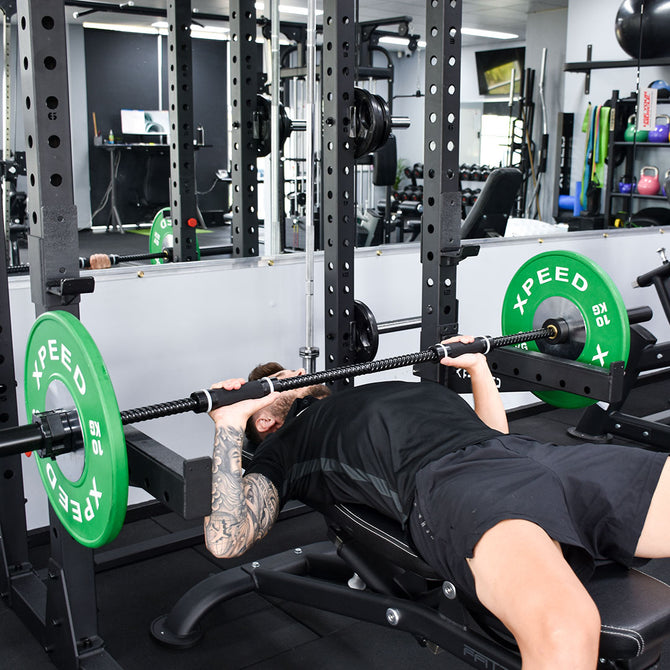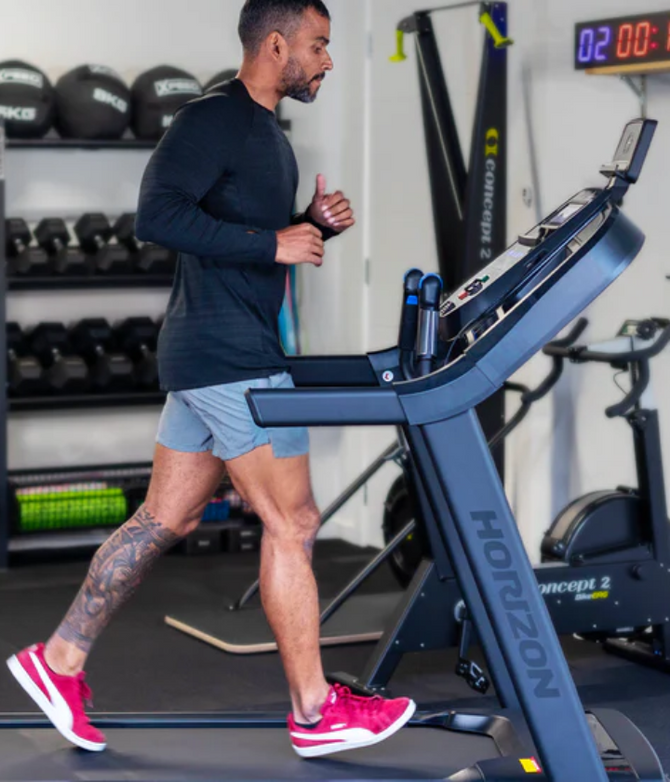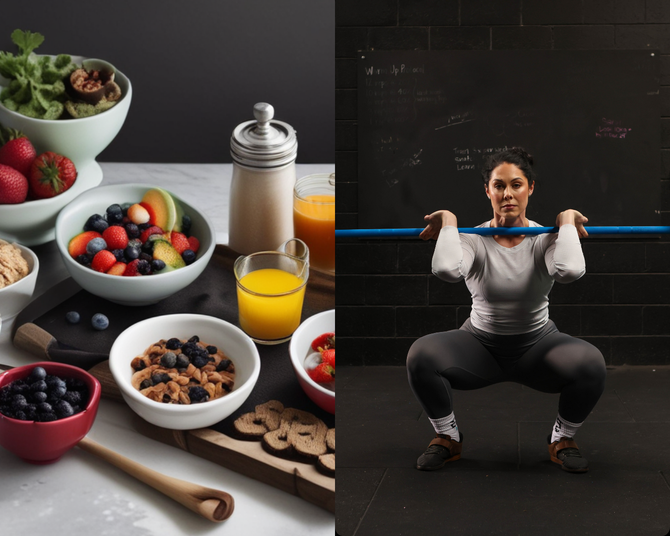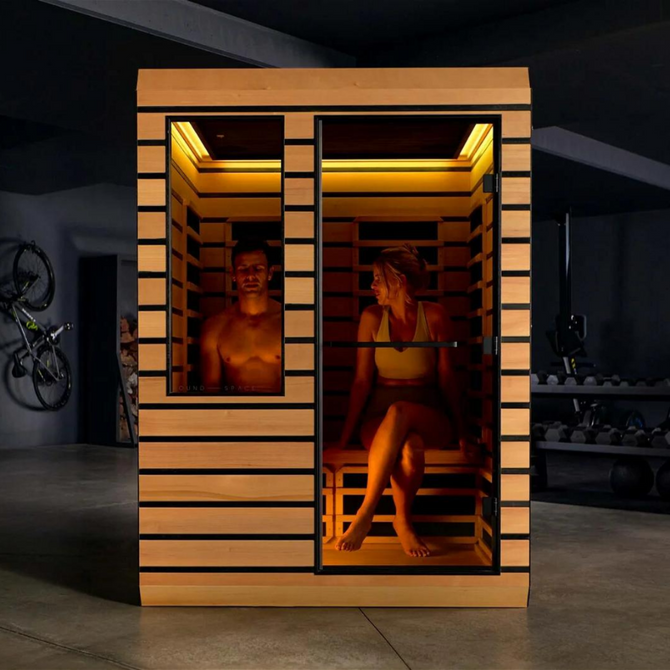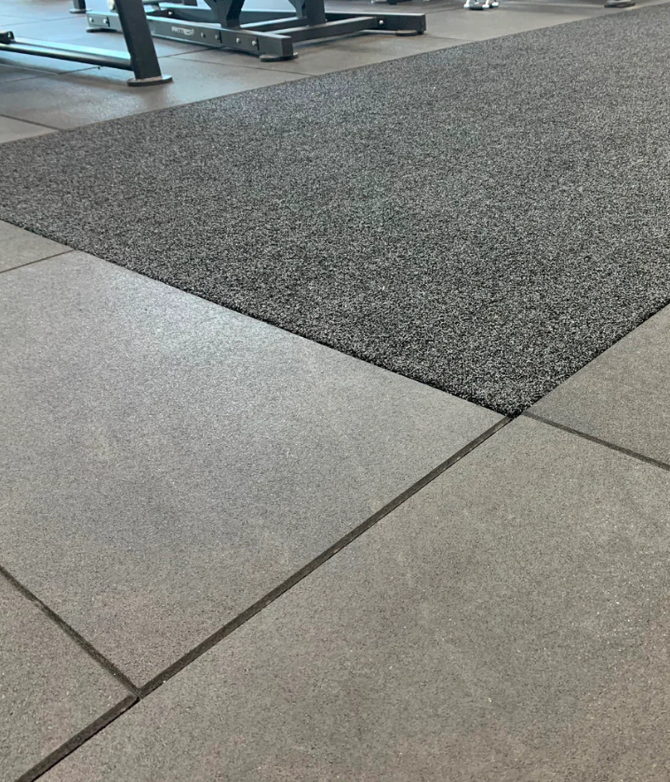How Often Does An A-League Player Foam Roll? Insights From The Head S&C Coach of Adelaide United
Prepare to delve into the world of recovery with the head Strength and Conditioning coach of Adelaide United, Django Gentilcore, where we’ll explore the vital role foam rolling can play in optimising athletic performance.
Our partnership with Adelaide United allows us to work together in promoting the benefits of fitness and wellness to the wider Australian community. We know that when athletes are surrounded by fantastic coaching, the right equipment, whether it be functional training gear or our new range of recovery products, they're able to thrive in the elite sports environment. In addition, it allows us to help bridge the gap for sub elite players in the Australian soccer scene trying to break through to the elite level at Adelaide United and the A-League. We take pride in supporting The Red's and their pursuit of success on the field.
In this blog, we’ll discuss the importance of pre-roll and post-roll activities using foam rollers, gaining valuable insights from Django on how these techniques contribute to the team's recovery, injury prevention and overall physical well-being. So, let's roll into the world of recovery with Adelaide United's S&C coach as our guide!
Django, how important is foam rolling as a pre-roll activity for athletes?
Before training we use foam rolling as one of multiple different pieces to an individual's pre-training preparation routine. It is not something we make compulsory each day at the club, however most players will come earlier than the scheduled prehab time to go through their own foam rolling & mobility routines. The players report feeling that it greatly helps in reducing their perceived muscle tension and/or restrictions to their baseline mobility that they may encounter after a heavy training session the day/days before. Therefore if the players report feeling lighter, more mobile, and more prepared to train, then we feel that foam rolling is time well spent for them.
Sometimes there’s confusion as to whether foam rolling is a pre or post exercise activity. Do you do both with the AUFC squad and why?
As mentioned above, the players certainly use it pre-training, for the benefits they feel it makes on their general mobility, and therefore their performance throughout training. Post-training we do not use foam rolling too much, as it's usually a time the players will utilise other recovery strategies, such as; stretching, ice baths, protein shakes, etc. However it is not black and white, and there are occasionally players who will come into the gym and use the foam rollers if they have felt stiff somewhere throughout the training session, and are happy to self-massage with a foam roller / trigger point ball.
How frequently should athletes incorporate foam rolling into their recovery routine? Is there an optimal time duration for each foam rolling session?
The frequency and duration of foam rolling is something I believe to be highly individual, as each person has a unique set of physical/psychological wants and needs. However, as a general guideline if you were looking to add foam rolling into your weekly routine, as a starting point I would say 10min before each training session (3-4x per week) would be sufficient. This would allow you to spend approx 45-60sec per side, of the key muscle groups (ie. glutes, hamstrings, quadriceps, adductors & calves).
Are there any instances when foam rolling should be avoided or modified?
As our recovery strategies span across the first 48-72hrs post-game, we usually leave any foam rolling until the first training session we do on pitch since the previous game. This would most commonly fall on MD+3, which refers to the 3rd day (or ~72hrs) since our last game. Players will usually feel the highest amount of muscle / body soreness during this period, partly due to muscle fibre damage that is caused by 90min of intense football actions, and therefore we do not use firm foam rolling or firm massage during this 24-48hr period. Furthermore, we wouldn't encourage any players to foam roll directly over an injured muscle/area, or a wound that is either open, or still healing.
In addition to foam rolling, what other recovery strategies or modalities do you recommend for athletes to enhance their overall recovery process?
When it comes to recovery, we try to promote the 3 big rocks that we believe will get our athletes back to their best physical and mental state the quickest way possible, which are; Good amount of quality sleep, good nutrition and protein intake, and adequate rehydration post games and heavy training sessions.
Beyond this, we use different recovery strategies and modalities throughout the training week, with a different emphasis on a particular strategy each day.
For example, we often use ice baths, massage and pool based mobility 24-48hr post games, with contrast baths and gym & pitch based mobility commonly used on MD+3. We then take a more individual approach beyond 72hrs post game, where the players will utilize the modalities that they believe is best for in those final days leading into a match.
How does the partnership between Fitness Warehouse and Adelaide United contribute to the team's recovery and performance goals? What equipment do you find particularly effective for the team's needs?
The partnership between Fitness Warehouse & Adelaide United has been pivotal in the teams performance goals as it has helped us to completely reshape our gym facility year on year, which allows us to provide the squad with a great environment full of top class equipment for them to utilise for all their pre-training preparation, strength & power sessions, and recovery work. Everything from power racks, hip thrust machines, and cable systems, to kettlebells, dumbbells and power bands, no matter what equipment we have ever required, Fitness Warehouse have provided us with. It has been especially paramount to the success we have had physically developing our younger group of players.
How do you educate and encourage athletes to incorporate foam rolling into their regular training routines? Are there any tips or strategies you find helpful in ensuring compliance and consistency?
To be honest, it is something that most of the boys love to do in their own time before training, so it is not something I usually have to really drive and ensure compliance. Majority of the squad will get into the gym 10-15min before team prep, and do their own roll, so I guess that somewhat speaks to the perceived benefits they feel from it, which is great! It's such a cheap and effective tool, so it really is something that everyone can do no matter what age or level you are playing at.
No matter if we're training at Playford at our training base, playing at Coopers Stadium, or traveling interstate, we always have our Xpeed foam rollers and other soft tissue therapy devices with us, such as Xpeed trigger point balls, so the boys are using them almost every day.
A Powerful Tool
So there you have it, foam rolling is a powerful tool that can greatly enhance your athletic performance and overall well-being. As we've learned from the insights of Django, Adelaide United's Head Strength and Conditioning Coach, its effectiveness lies in its individuality. Just like every player on the field has their unique strengths and weaknesses, so too do we all have our distinct physical and psychological needs.
Therefore, incorporating foam rolling into your fitness routine isn't a one-size-fits-all approach. Instead, it's about understanding your body, listening to its cues and customising your practice accordingly. As you embark on this journey, remember that it's not just about the physical benefits, but also the mental ones. The mindfulness that comes with foam rolling can help you connect with your body on a deeper level, enhancing your self-awareness and focus.
As a starting point, following Django's guideline of 10 minutes of foam rolling before each training session, three to four times a week, can be a game-changer. It's a simple and effective way to unlock your body's potential and maximize your performance.
So, whether you're a professional athlete striving for excellence or someone looking to enhance their daily life, remember that foam rolling is a tool that can adapt to your needs. Embrace it, make it your own and watch as it transforms the way you move and feel. Your journey towards a healthier, more resilient you begins with that first roll, then the consistency and commitment is up to you.


